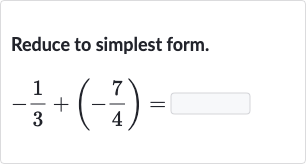AI tutor
Full solution
Q. Reduce to simplest form.
- Identify common denominator: Identify the common denominator for the fractions and .The common denominator for and is .
- Convert to equivalent fractions: Convert each fraction to an equivalent fraction with the common denominator of .For , multiply both the numerator and the denominator by to get .For , multiply both the numerator and the denominator by to get .
- Add fractions with common denominator: Add the two fractions with the common denominator.
- Perform numerator addition: Perform the addition of the numerators. So, the combined fraction is .
- Check for further simplification: Check if the fraction can be simplified further.Since and have no common factors other than , the fraction is already in its simplest form.
More problems from Multiply using the distributive property
QuestionGet tutor help

